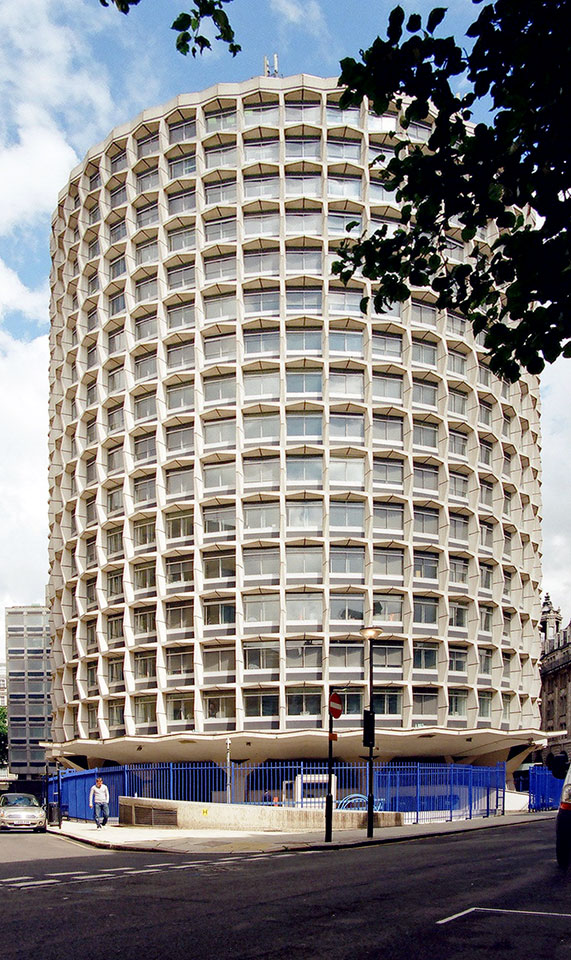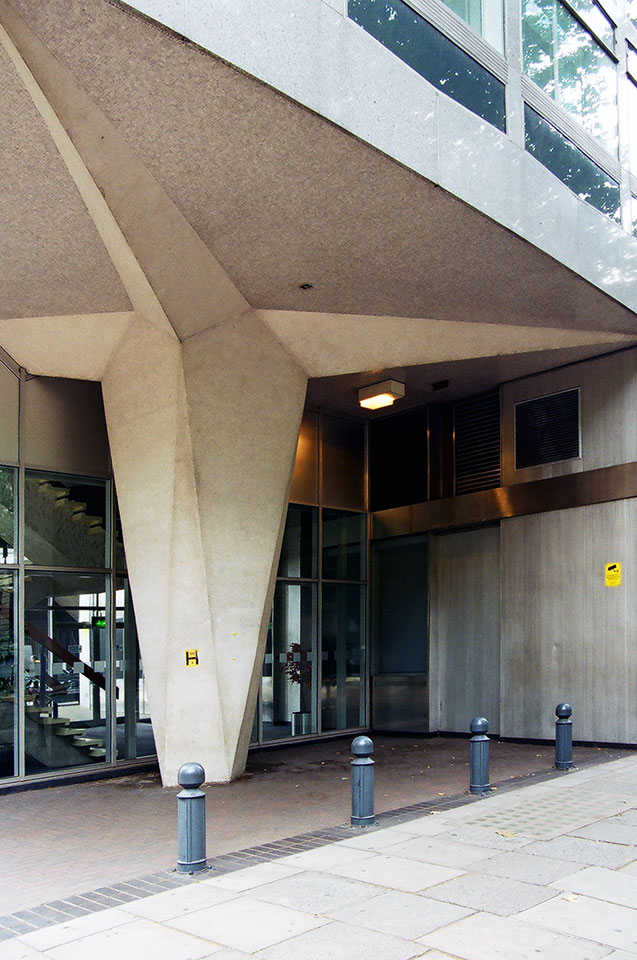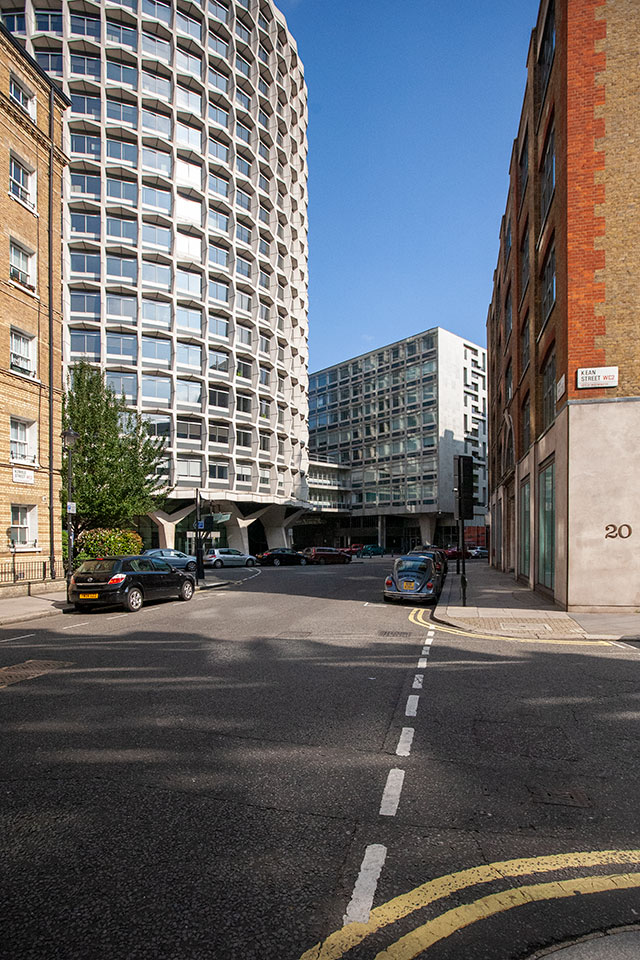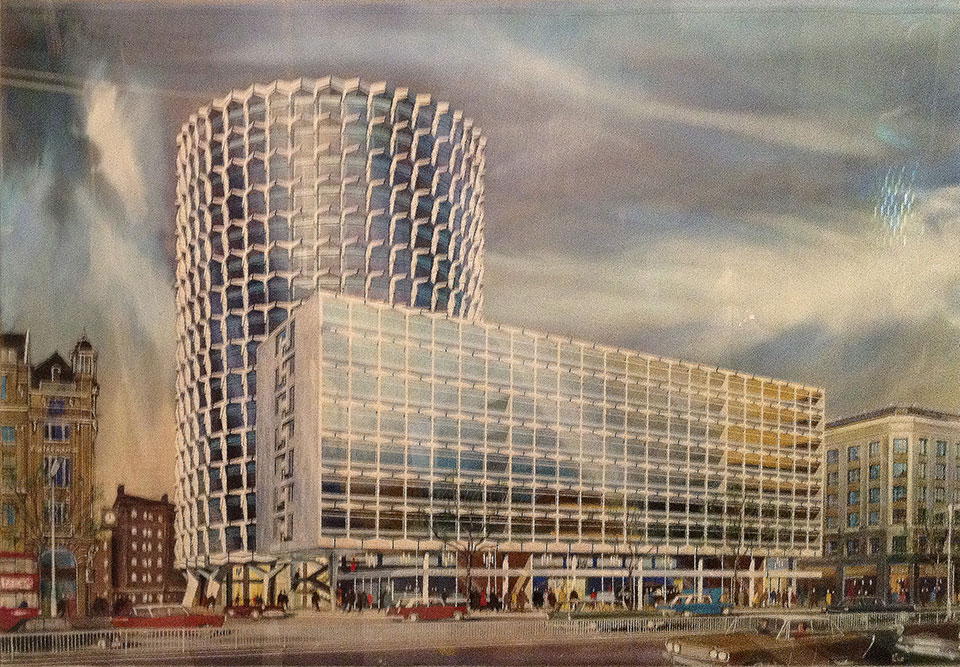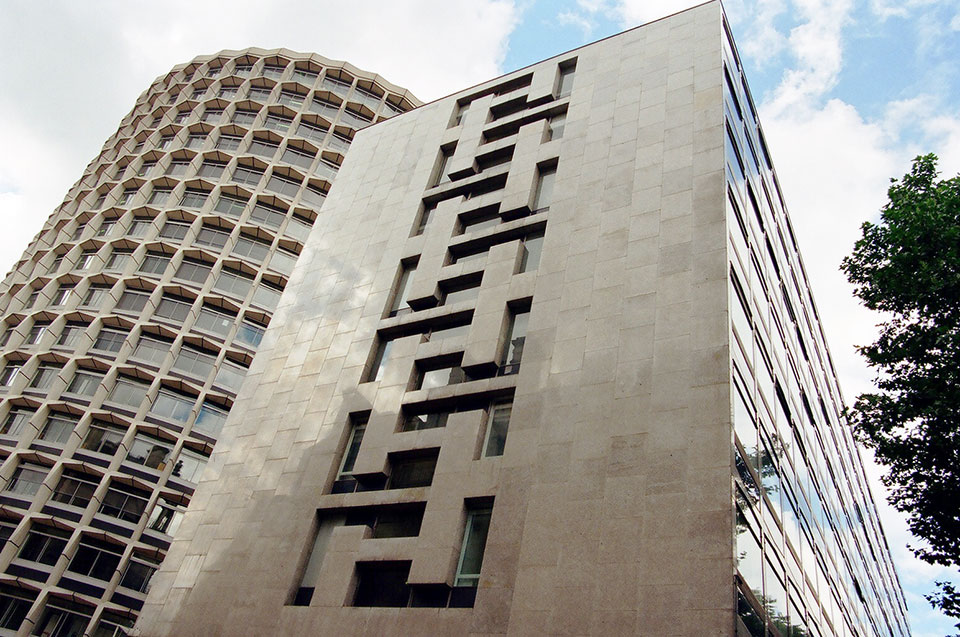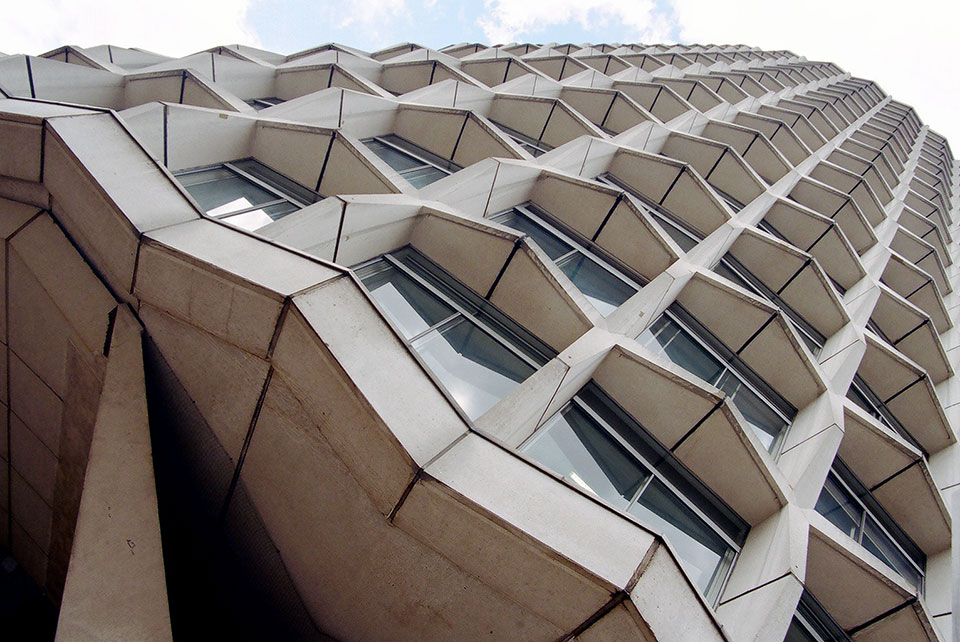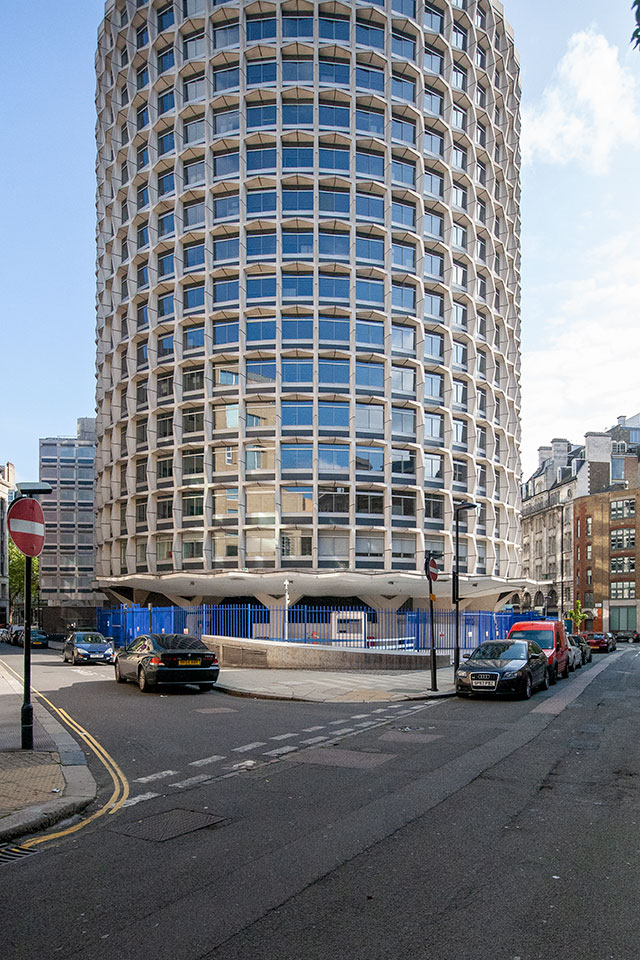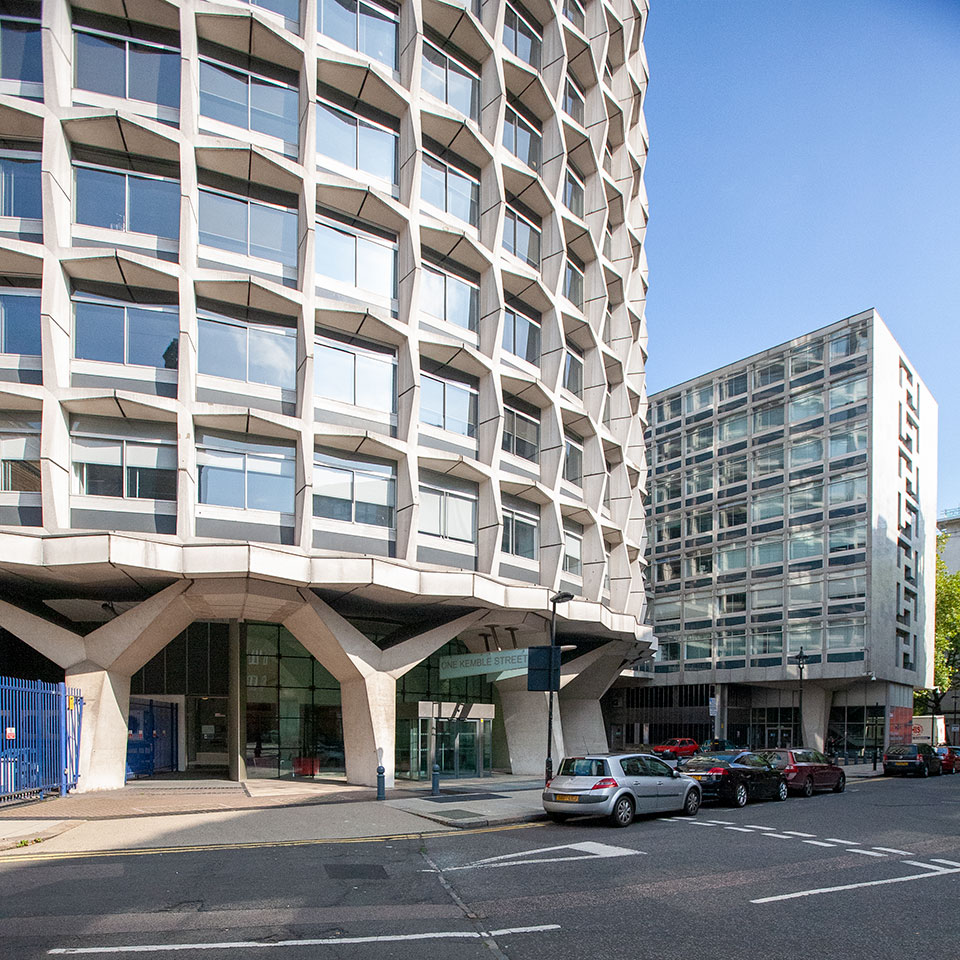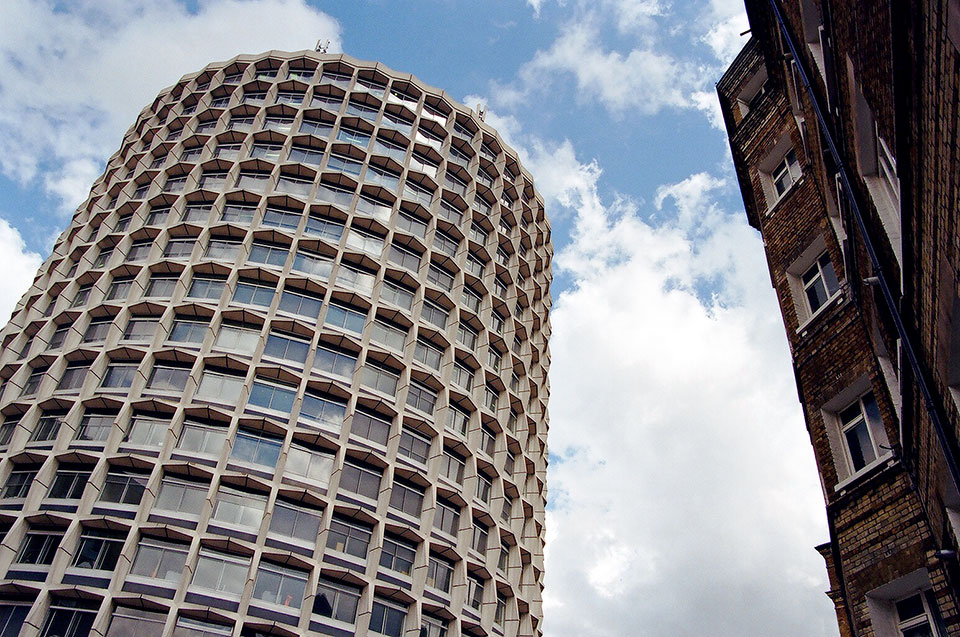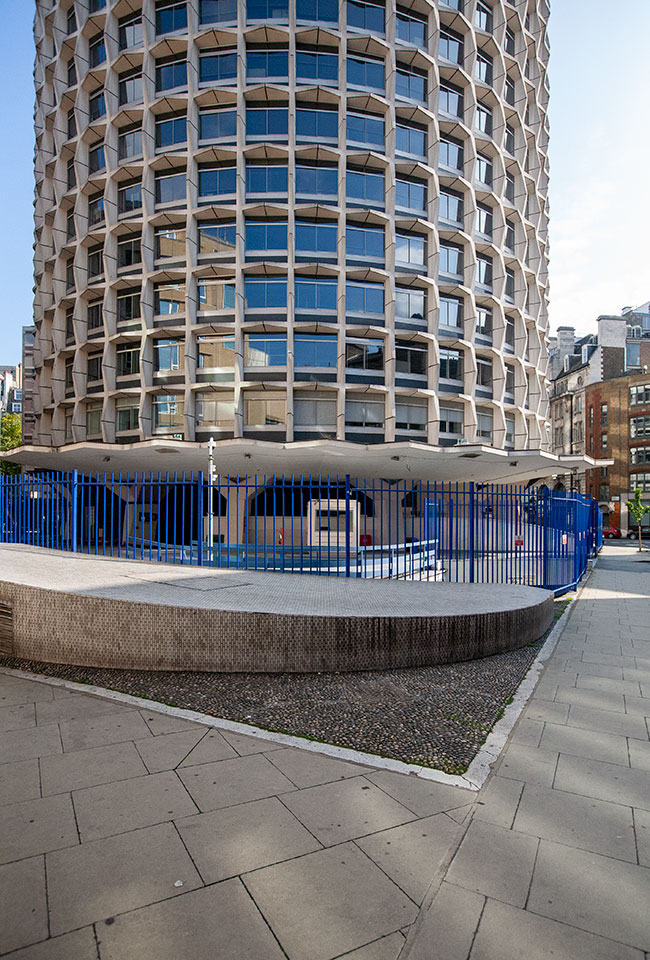Space House
1968
A cylinder and a slab, with the former drawing all the attention. The shape of the tower was ‘an attempt to avoid infringing neighbouring residents’ right to light’ [1]. Designed by George Marsh who brought most of the funk to Seifert’s commercial architecture, the seventeen storey round tower made creative use of heavily modelled precast concrete units. 10ft (3.3m) sharply faced cruciform units made from a polished white Capstone aggregate are stacked with expressed joints around the full perimeter of the tower. Their depth and angled surfaces afford the pedestrian a pleasingly modulated view of the façade. A central core with an inner and outer ring beam act integrally with the façade modules and radial beams to give structural stability. Thus, the engineering performance and is tied to the aesthetic of the building. The whole outer structural system lands on large in-situ cast Y shaped columns – something of a Seifert-Marsh motif. The striking hulk and geometry of the columns invigorates the pavement level experience giving a little vitality to the street. The slab block is seven storeys and also uses cruciform modules, but here they are faced with a much more sober polished grey granite with aluminium window frames and dark spandrel panels set flush. Built by Robert McAlpine and Sons for property tycoon Harry Hyams, who was also Seifert’s client for nearby Centrepoint that was under construction as this was designed. Subject to two major refurbishments in 1996 and 2003, the building was Grade II listed in 2015.
[1] https://historicengland.org.uk/listing/the-list/list-entry/1421847
